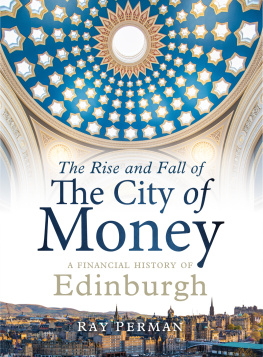Peter Temin - Prometheus Shackled: Goldsmith Banks and England’s Financial Revolution After 1700
Here you can read online Peter Temin - Prometheus Shackled: Goldsmith Banks and England’s Financial Revolution After 1700 full text of the book (entire story) in english for free. Download pdf and epub, get meaning, cover and reviews about this ebook. year: 2013, publisher: Oxford University Press, genre: Science. Description of the work, (preface) as well as reviews are available. Best literature library LitArk.com created for fans of good reading and offers a wide selection of genres:
Romance novel
Science fiction
Adventure
Detective
Science
History
Home and family
Prose
Art
Politics
Computer
Non-fiction
Religion
Business
Children
Humor
Choose a favorite category and find really read worthwhile books. Enjoy immersion in the world of imagination, feel the emotions of the characters or learn something new for yourself, make an fascinating discovery.

- Book:Prometheus Shackled: Goldsmith Banks and England’s Financial Revolution After 1700
- Author:
- Publisher:Oxford University Press
- Genre:
- Year:2013
- Rating:5 / 5
- Favourites:Add to favourites
- Your mark:
- 100
- 1
- 2
- 3
- 4
- 5
Prometheus Shackled: Goldsmith Banks and England’s Financial Revolution After 1700: summary, description and annotation
We offer to read an annotation, description, summary or preface (depends on what the author of the book "Prometheus Shackled: Goldsmith Banks and England’s Financial Revolution After 1700" wrote himself). If you haven't found the necessary information about the book — write in the comments, we will try to find it.
Peter Temin: author's other books
Who wrote Prometheus Shackled: Goldsmith Banks and England’s Financial Revolution After 1700? Find out the surname, the name of the author of the book and a list of all author's works by series.
Prometheus Shackled: Goldsmith Banks and England’s Financial Revolution After 1700 — read online for free the complete book (whole text) full work
Below is the text of the book, divided by pages. System saving the place of the last page read, allows you to conveniently read the book "Prometheus Shackled: Goldsmith Banks and England’s Financial Revolution After 1700" online for free, without having to search again every time where you left off. Put a bookmark, and you can go to the page where you finished reading at any time.
Font size:
Interval:
Bookmark:
Prometheus Shackled: Goldsmith Banks and
Englands Financial Revolution after 1700
Peter Temin Hans-Joachim Voth
Draft 28-7-2011
page
This is a book about banking in eighteenth century London. It is interesting for several reasons. Changes in society and economy in the eighteenth century set the stage for the Industrial Revolution, one of the two major eventsthe other is the Agricultural Revolutionthat stand out in any really long-run account of human population or economic activity. Curiously, the growth of banking has been ignored in most accounts of the Industrial Revolution, in contrast to the extensive study of banks in late economic events. We explain in the following pages why banks were marginal to the Industrial Revolution.
Looking into more detail, modern commercial banking grew out of the activities of London goldsmiths at the beginning of the eighteenth century. If it seems natural that goldsmiths turned into bankers, it is only because of repetition. Discussions of the economy of the twenty-first century distinguish between the manufacture of goods and provision of finance. This distinction is illuminating for earlier years as well; banking is not at all like the production and sale of jewelry. What we call goldsmith banking was a new economic activity of the eighteenth century, and we describe how this activity arose and began to prosper.
Examining this record in even more detail reveals how intertwined the growth of goldsmith banking was with government policies. The British government of the eighteenth century was concerned with containing the government of France. There was a large difference between Louis XIV and Napoleon, but they were both indisputably French. The English rose to the occasion at the beginning and end of the eighteenth century, and these efforts affected goldsmith banks and through them the economy as a whole. Early on, the governments fumbling efforts to increase tax revenues resulted in bank restrictions and then the South Sea Bubble. Later, the need for resources to fight the French retarded economic growth during the Industrial Revolution.
Incomes per person had only grown slowly and intermittently before the Industrial Revolution. After it, growth eventually became rapid. Economic theorists working on unified growth have puzzled over what generated the transition in the first place. Historians of technology have documented the numerous inventions in processes and products. Economic historians have spent decades documenting that while rapid growth was the eventual outcome, the transformation of the English economy between 1750 and 1850 was slow. Economists of an institutional bend have emphasized the rapid improvements in the constitutional arrangements in Britain after the Glorious Revolution of 1688. Social historians have documented the repercussions that massive structural change had for the working lives of ordinary people.
This book tries to fill an important hole in this extensive literature. There is no good explanation why, at a time of impressive technological change, growth overall was remarkably slow. We propose to fill this gap by examining a factor on which scholars have often remained silent - private sector finance. In Arthur Conan Doyles The Hound of the Baskervilles, Sherlock Holmes points to the remarkable behavior of the dog in the night. What was remarkable was that the dog did not bark - leading directly to the discovery of the murderer. A large number of research papers have documented the importance of private finance for economic development. And yet, banks and other forms of intermediation are hardly mentioned in modern treatments of the Industrial Revolution.
We argue that the absence of an effective domestic financial system helps to explain the slowness of the Industrial Revolution. Public finance enabled Britain to become a world power in the eighteenth century; private finance was not so lucky. One form of collateral damage inflicted by the progress of public finance was the hobbling of private financial development. Banks were invisible in the Industrial Revolution because government regulations prevented banks from paying a more creative role. Worse, they were part of the mechanism by which the government allocated resources to warfare rather than industry.
In order to make this case, we have to take a long view of the British economic history. In order to explain conditions in the later eighteenth century, we need to describe events in the early eighteenth century. The effects of these earlier events on the private financial system were important and long lasting. They set the stage for the Industrial Revolution as we now know it; they precluded the fantasy of rapid economic change that is implied in some modern discussion.
The unique contribution of this book is to provide an explanation why the Industrial Revolution took so long. We analyze the financial conditions existing at the time of the innovations of the late eighteenth century. We argue that these conditions were created in the context of the turbulent economic conditions of the early eighteenth century as the government struggled with the problems of expanding its military role.
The government tried many different mechanisms to support its political program, of which the South Sea Bubble of 1720 was only the most spectacular. After this turmoil, banks emerged in a weakened condition that allowed them to grow steadily, but not to grow too fast or to become important for the development of the new technologies that would remake the world. Instead they helped the government divert resources from private investment to public consumption.
We set the stage in Chapter 1 by describing conditions in early eighteenth century London from the emergence of a nascent middle class to the adventurousness of the new government. In Chapter 2 we describe how goldsmiths learned to be bankers in this context. We focus on one successful bank that has lasted until today: Hoares Bank. Their records are the most complete, both because the bank still operates and because it still operates at the same address on Fleet Street. More partial records of other, similar banks reveal both similarities and divergences in early bank history. We turn to the demand for credit in Chapter 3, asking who took advantage of these new financial intermediaries. Credit was available equally to all classes of people, but not to all degrees of risk; the usury law precluded bank lending for risky projects. We conclude our description of the early eighteenth century with an analysis of the South Sea Bubble, a memorable result of rapidly increasing government borrowing gone wrong. This crisis affected early goldsmith banks, and it marks the turn from experimentation and change to more normal banking.
The account of banks in the later eighteenth century begins in Chapter 5 with a description of banks cruising in the more placid economic waters that followed the South Sea Bubble. They operated within the restraints imposed on them during the preceding economic turbulence and with conservative policies designed to get them through possible future crises. We explore the interaction of banking regulation and operating in Chapter 6, showing how government financial policies pushed banks into particular activities. As a result, banks not only were not involved in the Industrial Revolution, but the effects of banks restraints also retarded the economys growth. The mechanism behind this unfortunate effect is explored in more detail in Chapter 6, which chronicles the credit stringencies produced by the revolutionary and Napoleonic wars.
We conclude that the devil is in the details, to quote another aphorism. It is noteworthy that public finance and banks grew apace in the eighteenth century. But it is even more noteworthy that the details of their interaction forced early industrialists to go outside what had become the normal channels to raise funds for their new innovations. In addition, organized finance was used to starve these new producers for capital during the wars that coincided with the Industrial Revolution. However useful finance is to economic growth in other contexts, our study reveals how it enabled concurrent government activities to retard economic growth during the Industrial Revolution.
Next pageFont size:
Interval:
Bookmark:
Similar books «Prometheus Shackled: Goldsmith Banks and England’s Financial Revolution After 1700»
Look at similar books to Prometheus Shackled: Goldsmith Banks and England’s Financial Revolution After 1700. We have selected literature similar in name and meaning in the hope of providing readers with more options to find new, interesting, not yet read works.
Discussion, reviews of the book Prometheus Shackled: Goldsmith Banks and England’s Financial Revolution After 1700 and just readers' own opinions. Leave your comments, write what you think about the work, its meaning or the main characters. Specify what exactly you liked and what you didn't like, and why you think so.







